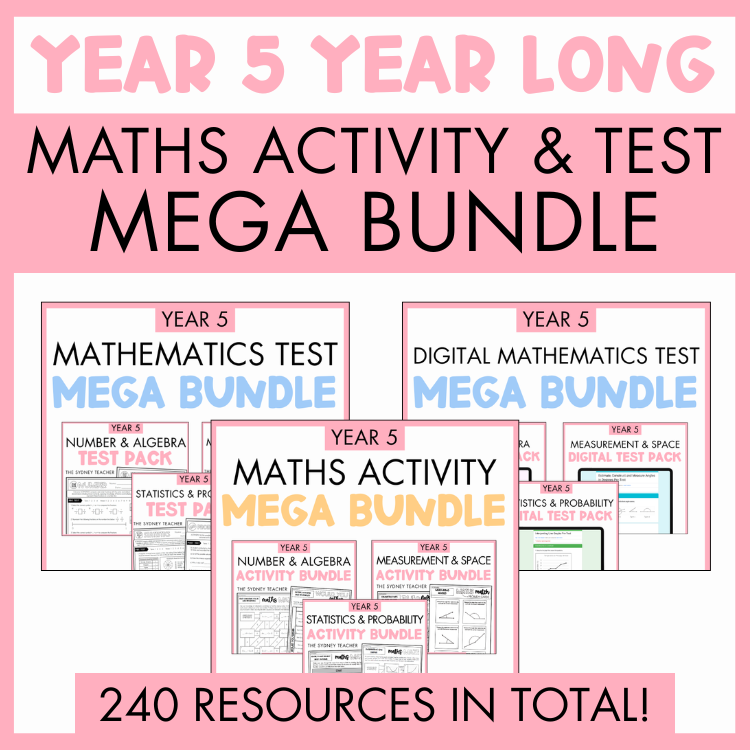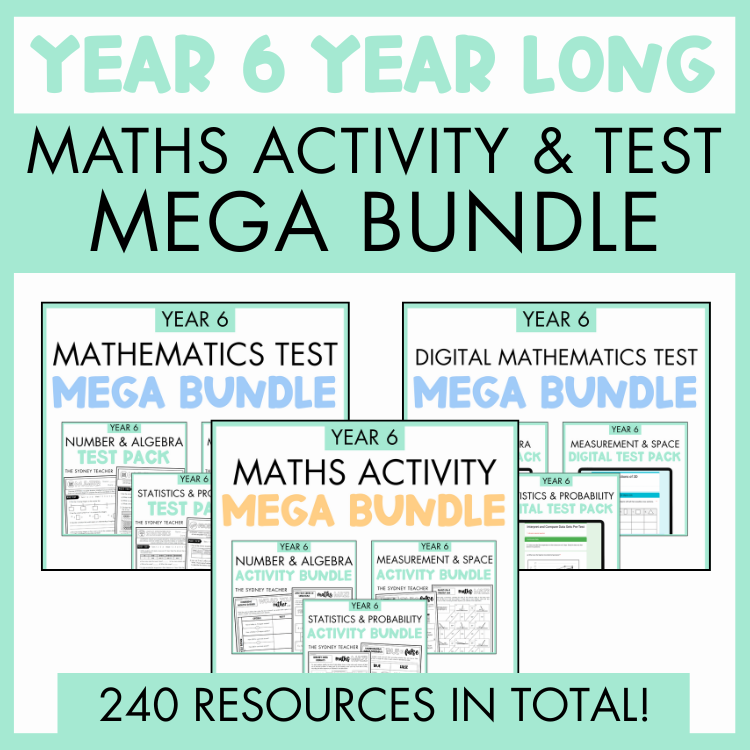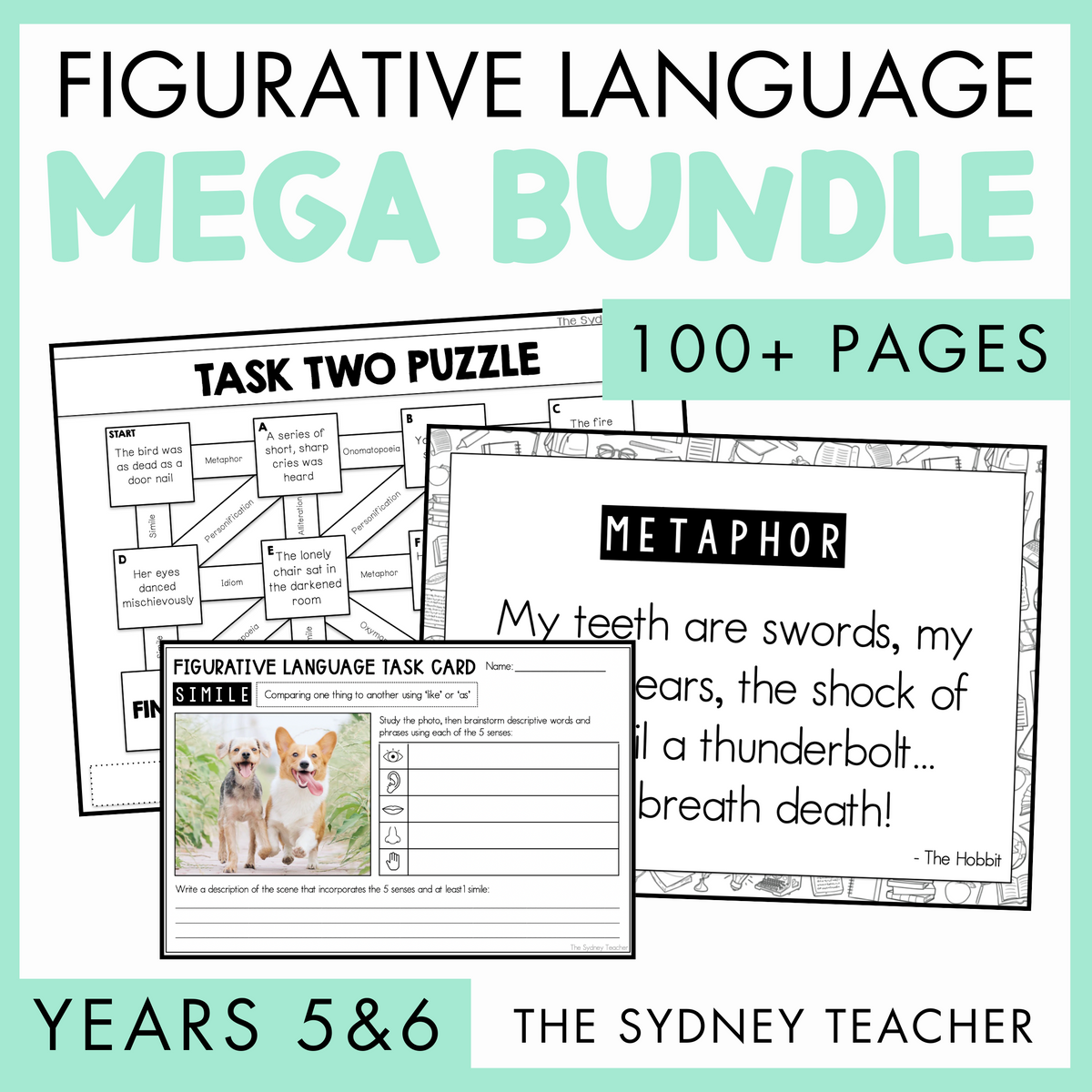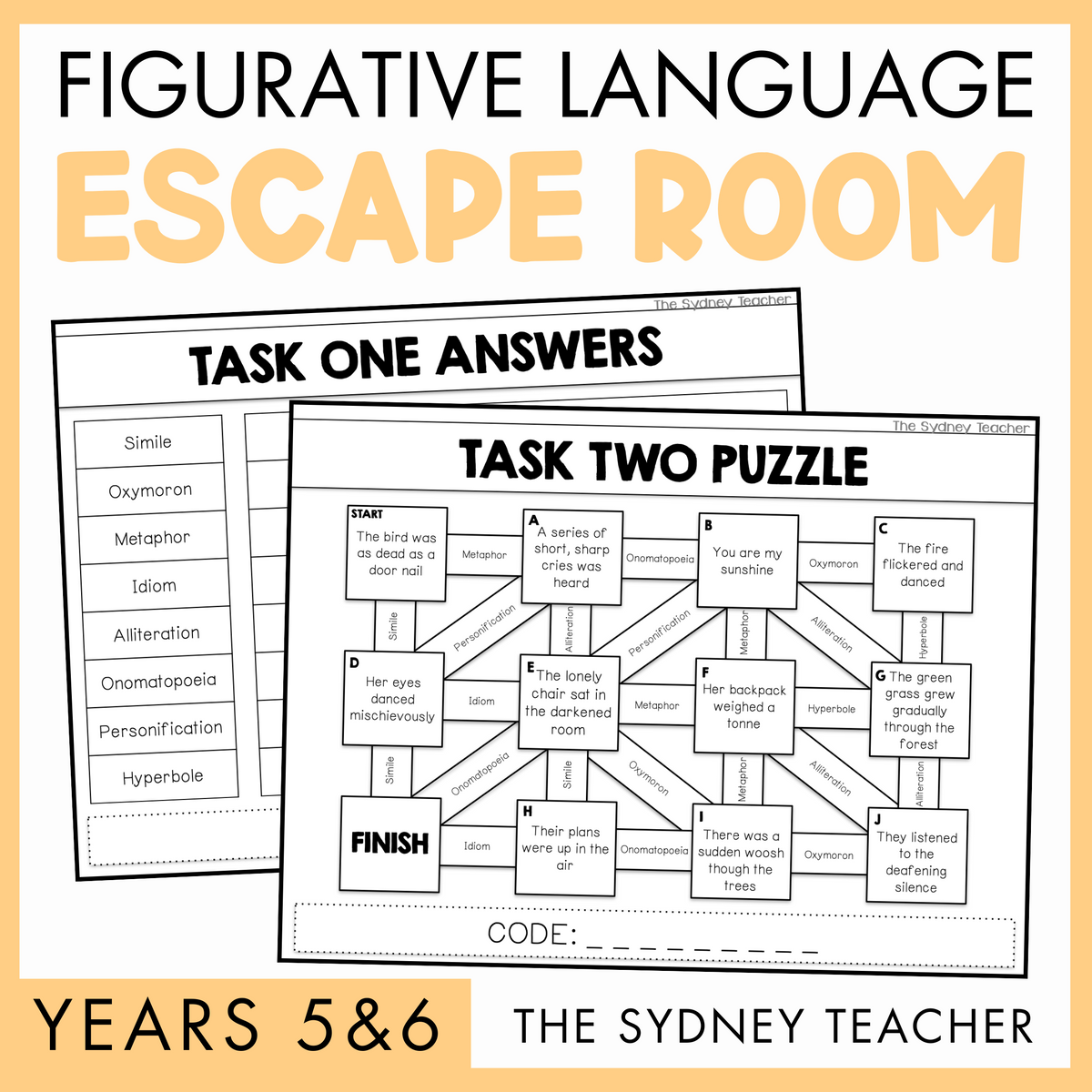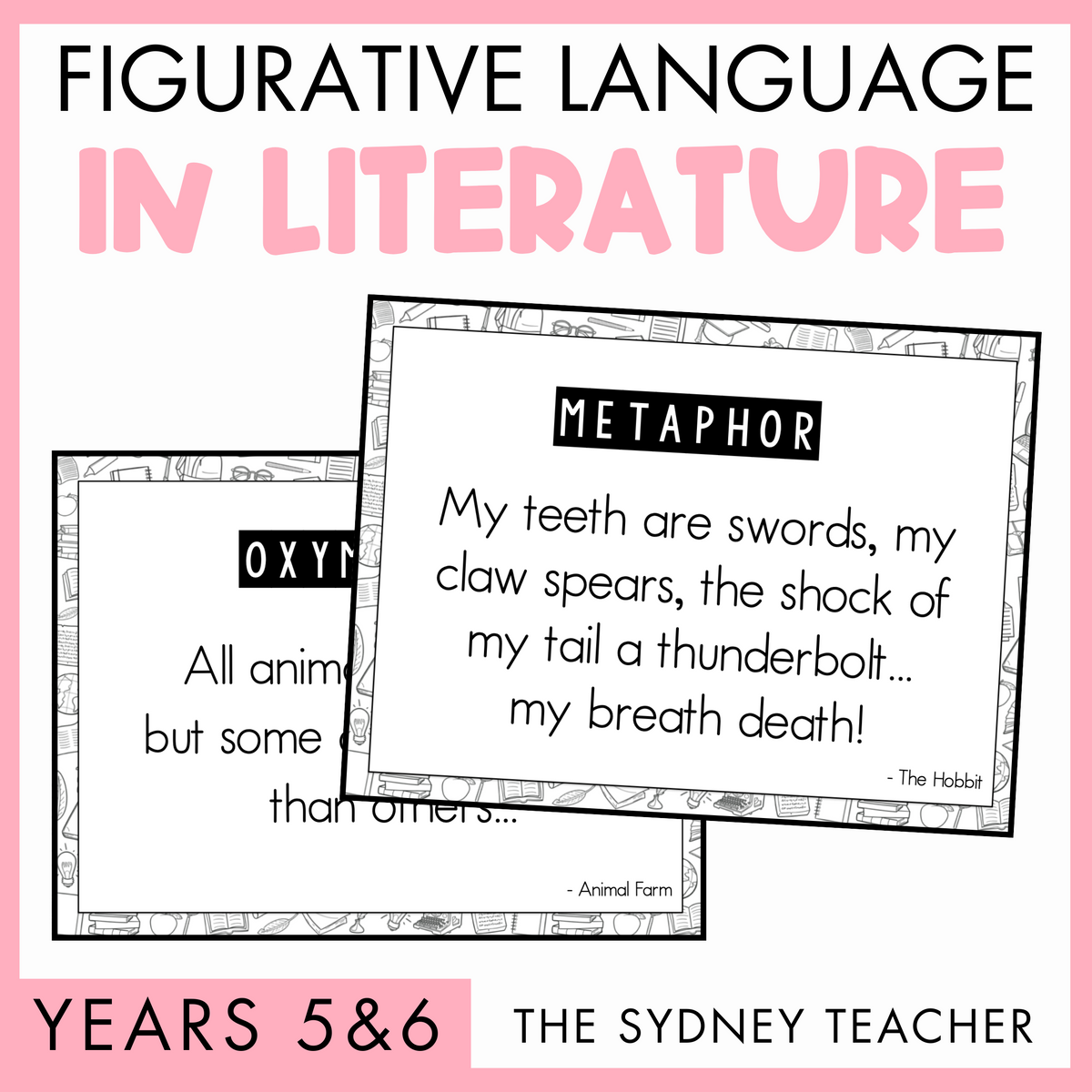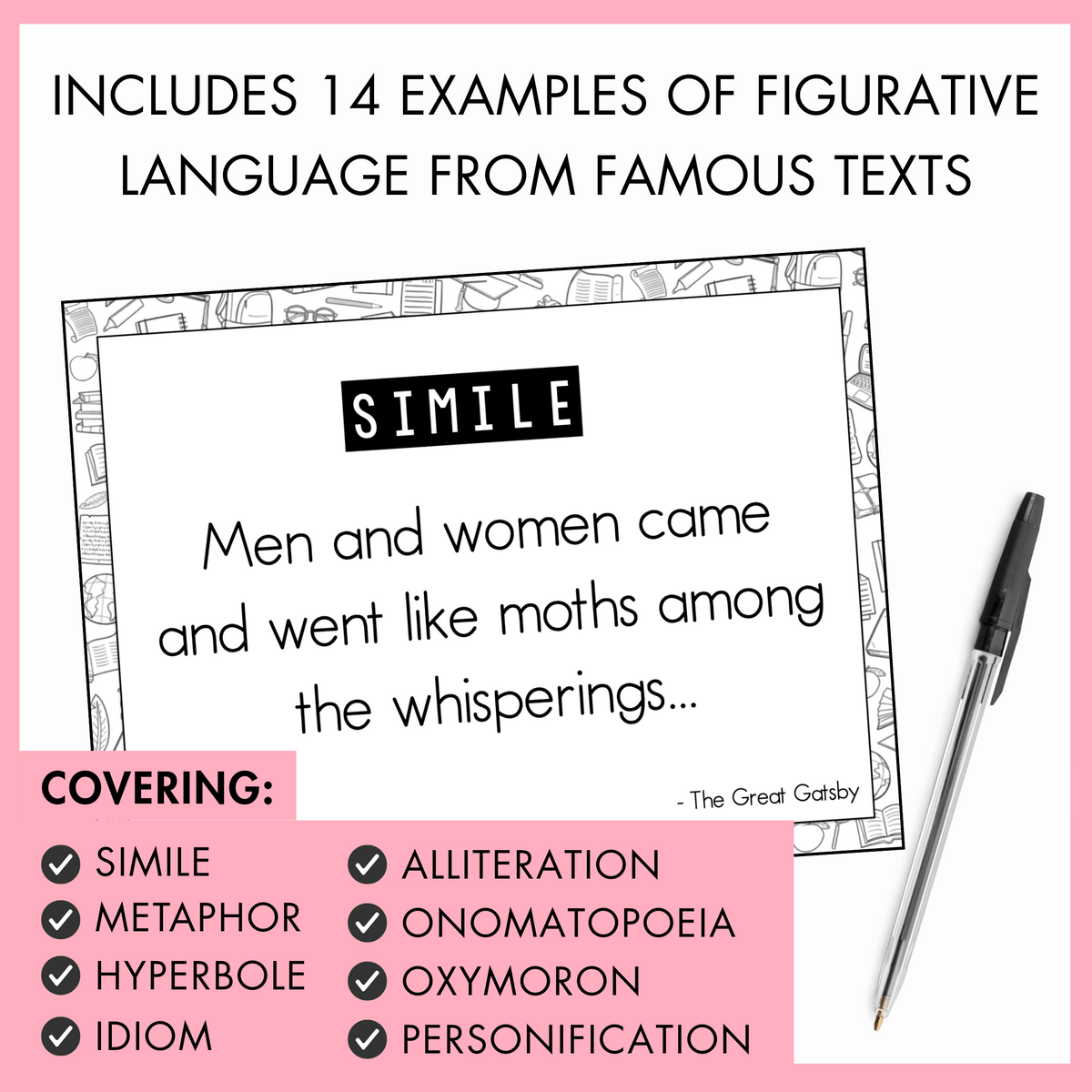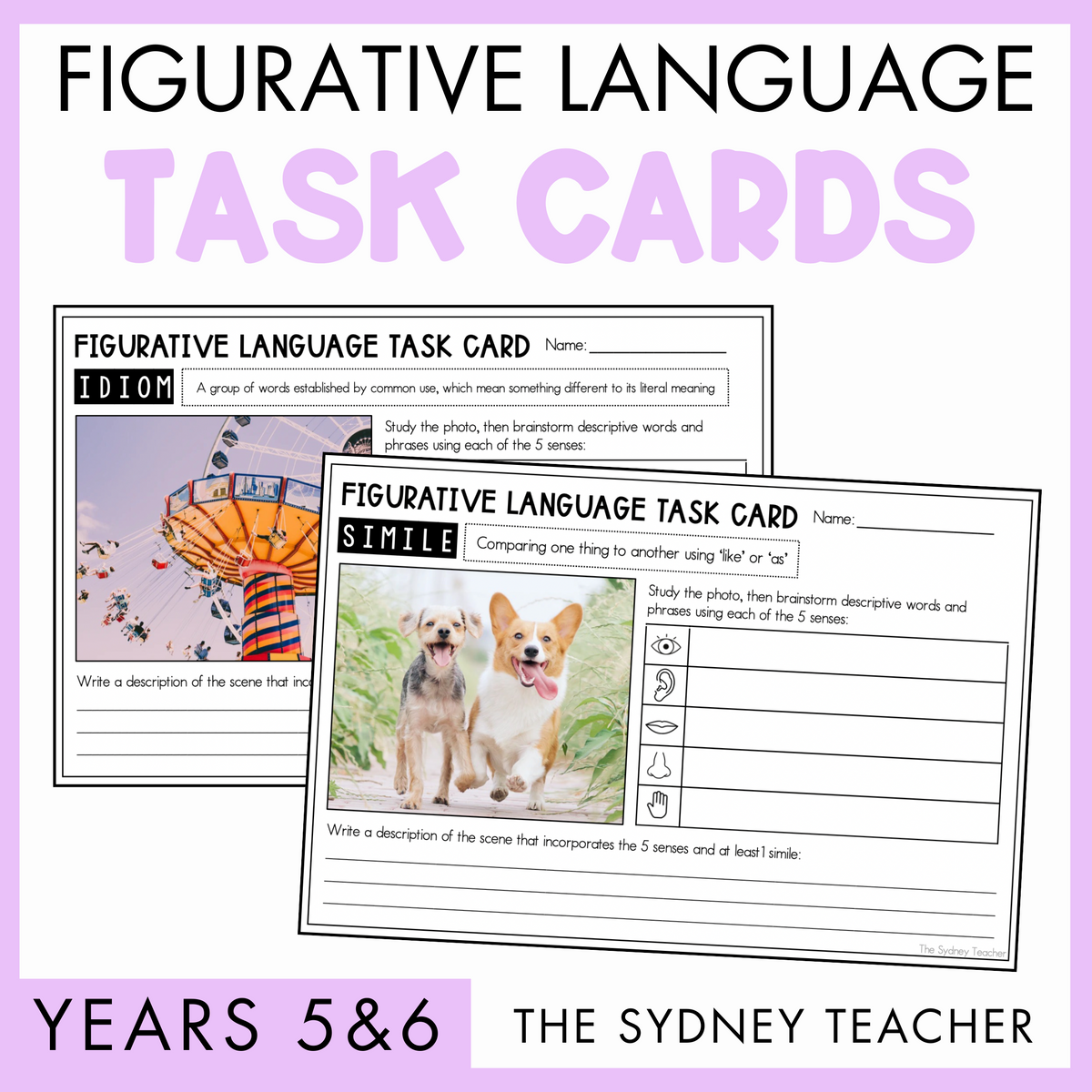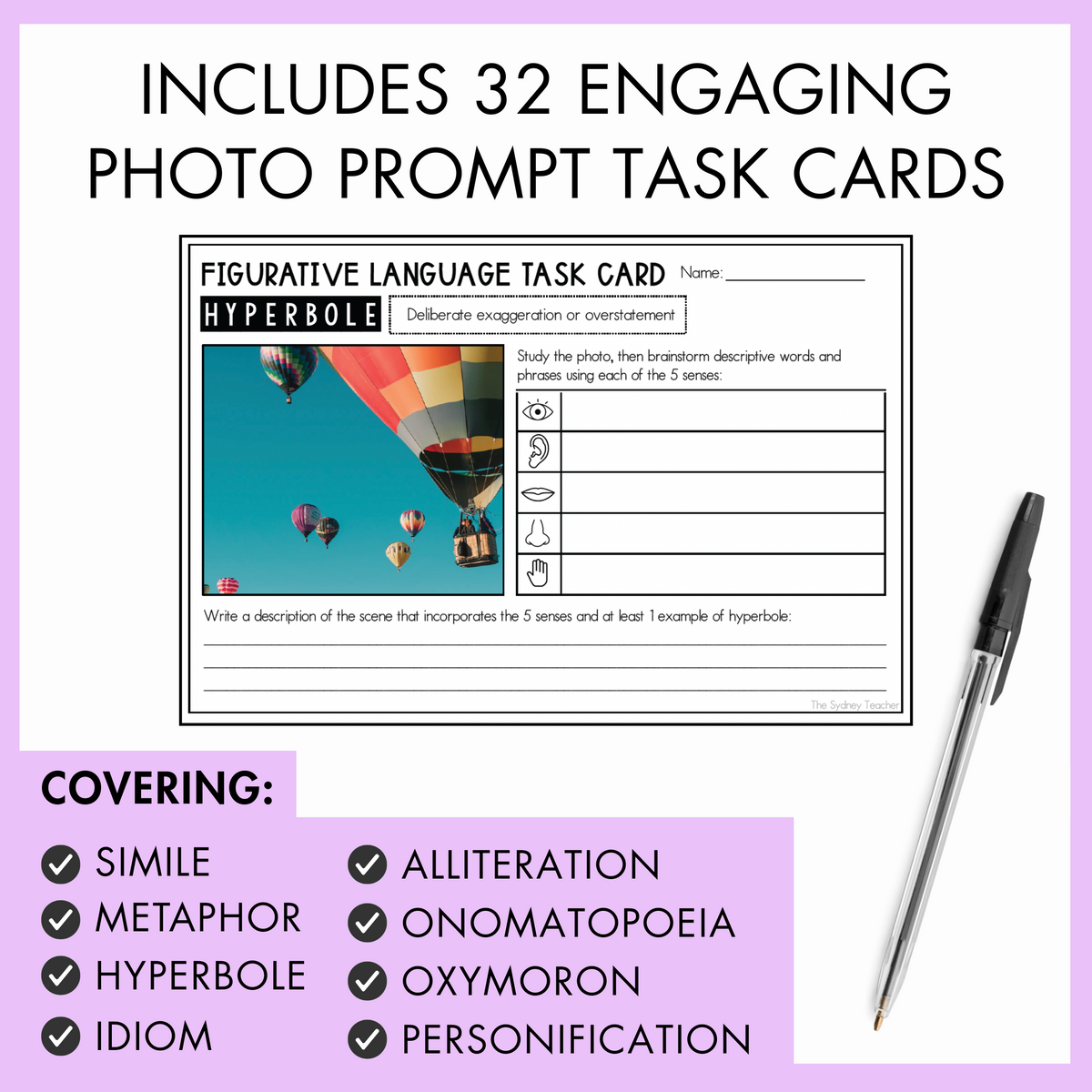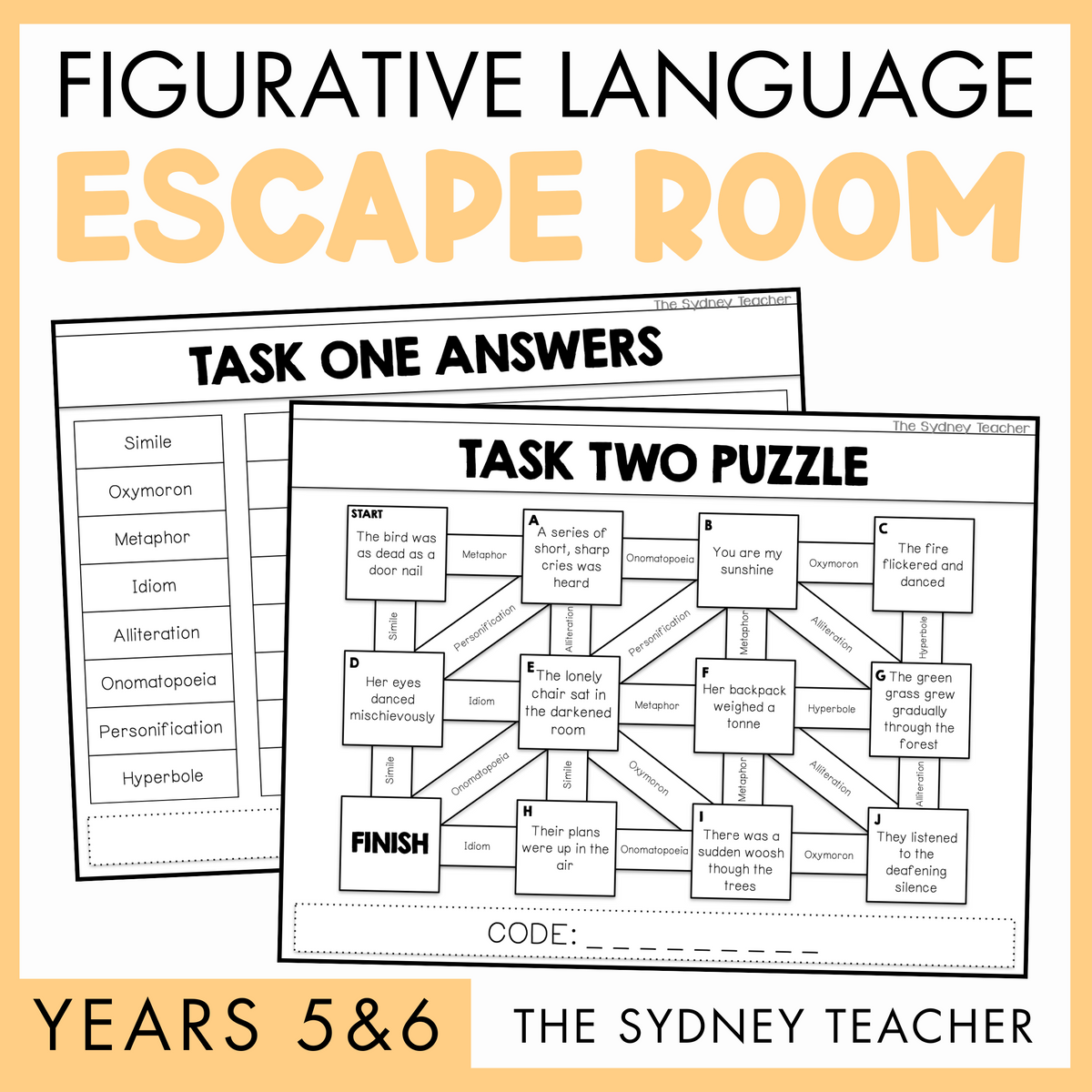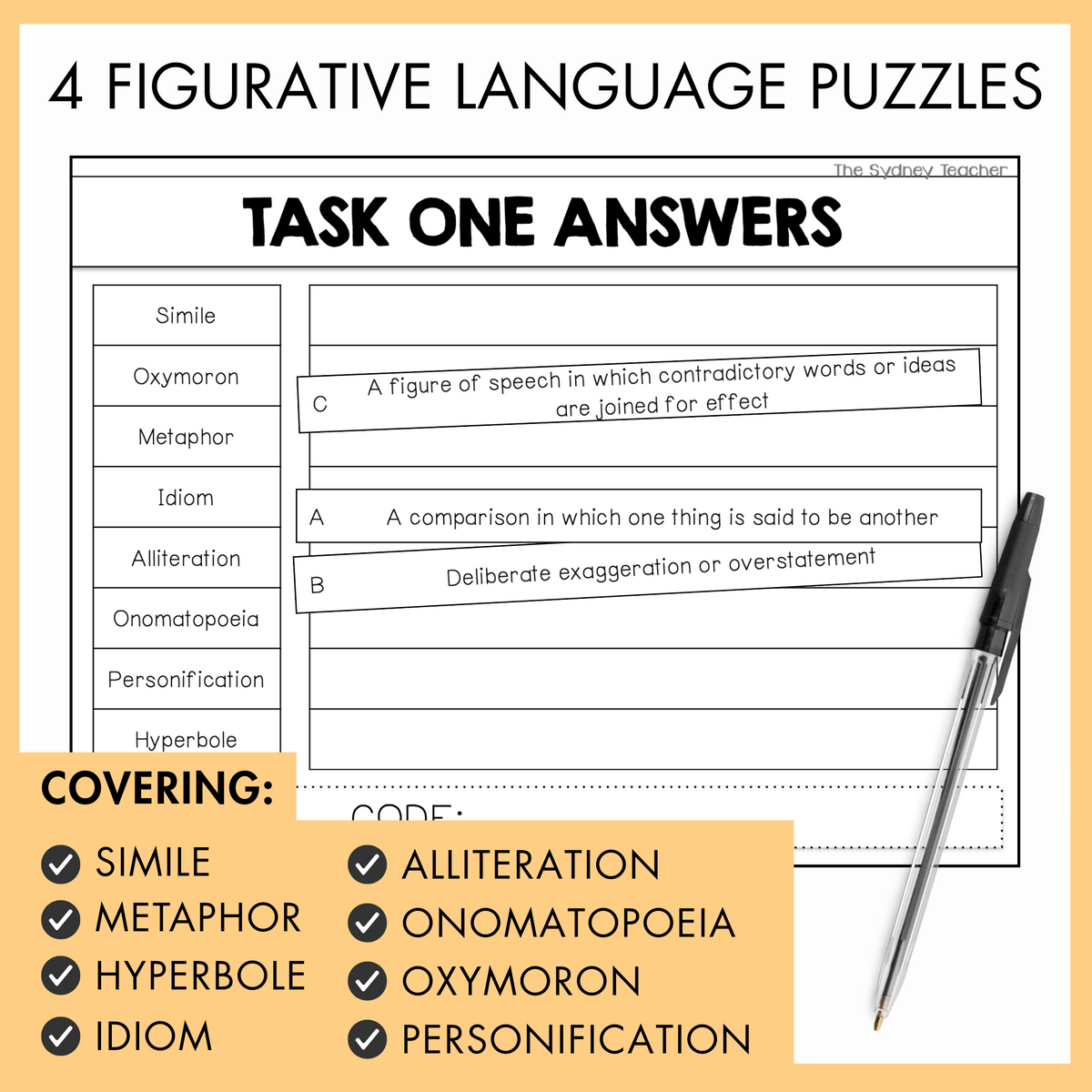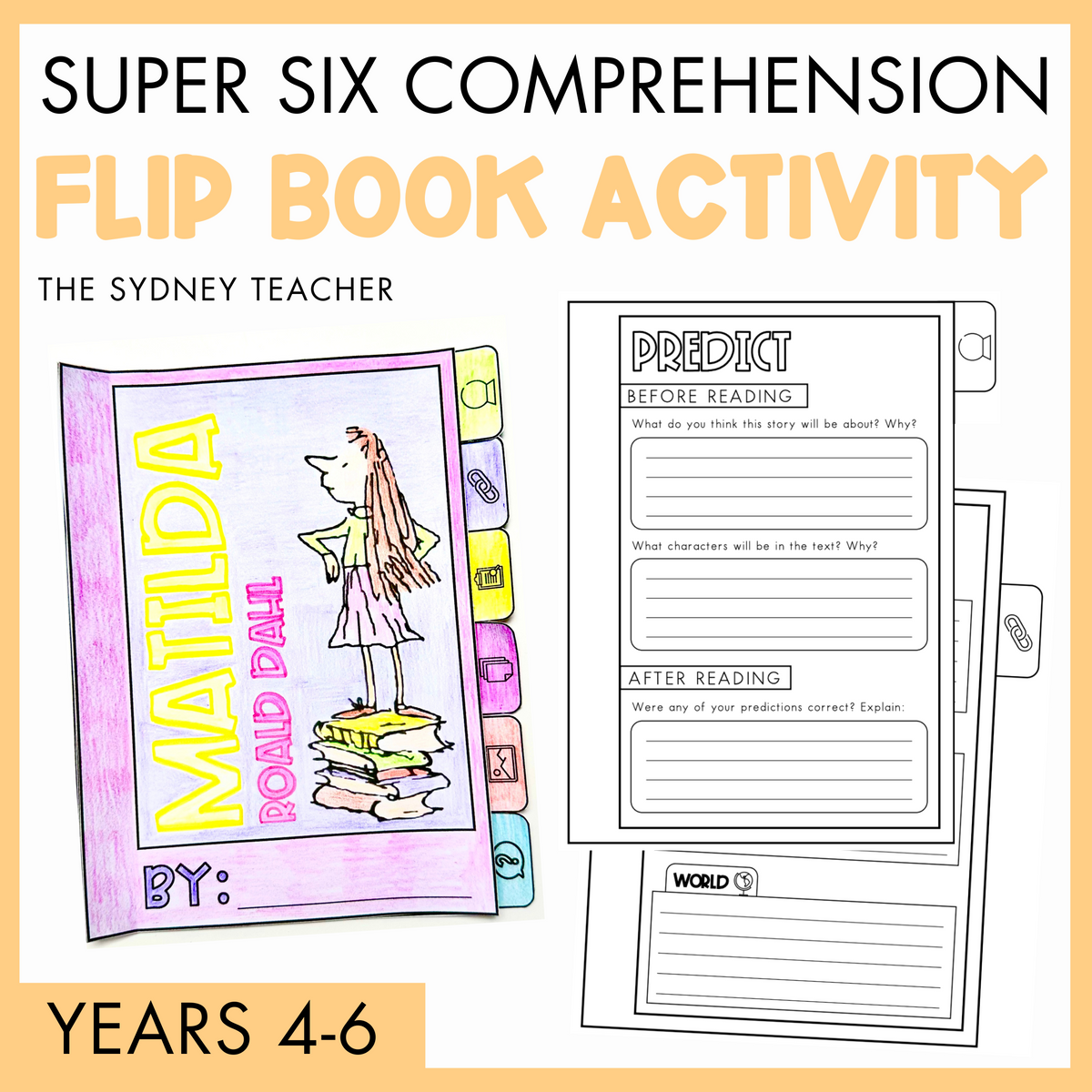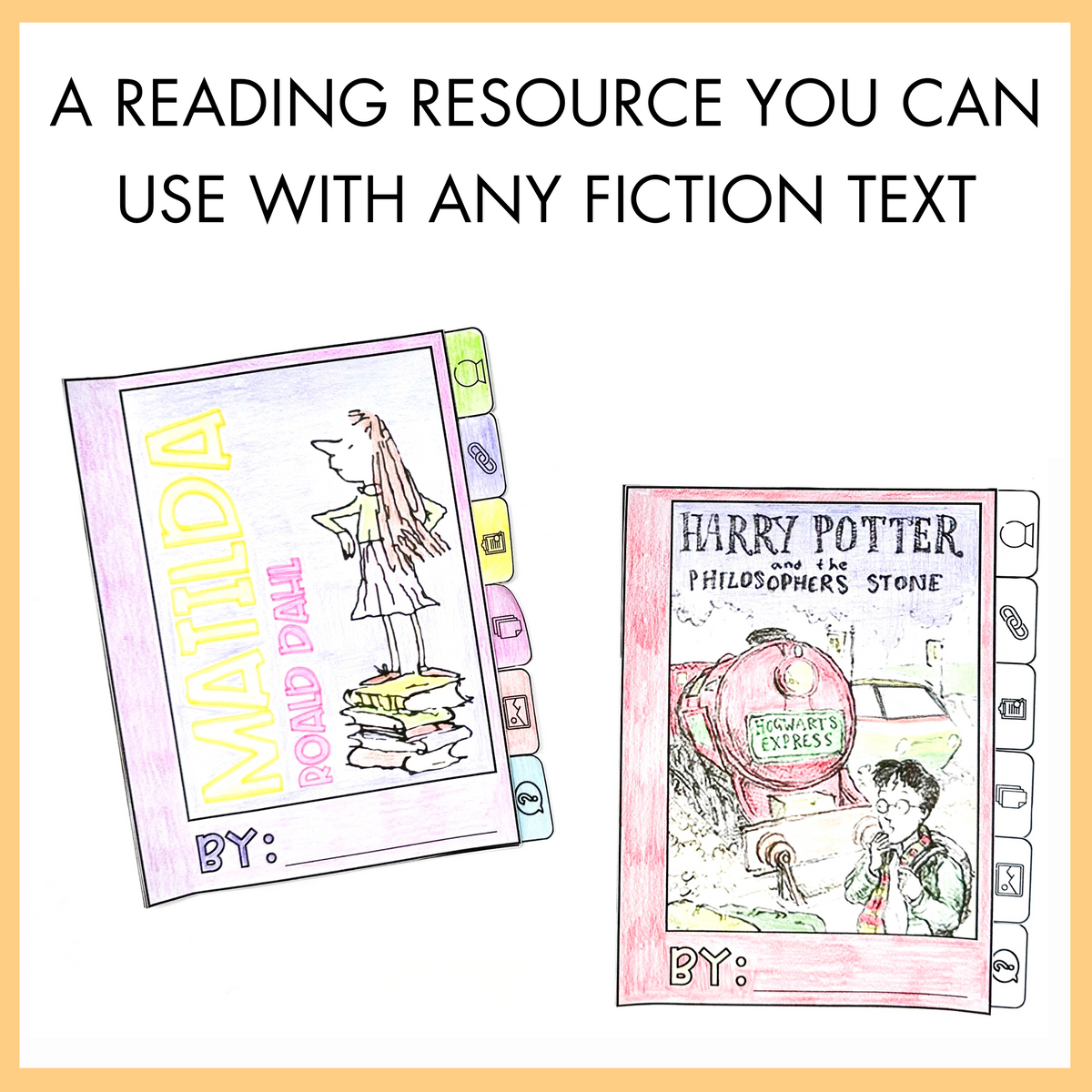


Figurative Language Short Stories
Figurative language, like many writing concepts, is best taught in context. That’s why this pack includes 16 short stories that are PACKED with figurative language.
Figurative Language Covered: simile, metaphor, hyperbole, idiom, oxymoron, alliteration, personification, and onomatopoeia
Purchase in this bundle
Why Choose The Figurative Language Short Stories?
- This resource includes 16 engaging stories on topics your students will love, such as a food fight in the teacher’s staffroom, an explorer discovering a lost world, and a museum coming to life after dark!
- Students can learn figurative language most effectively - by seeing it used in context!
- Excerpts can be used as story starters for new narratives!
- Flexible printing options in A4 or A5 make differentiation and classroom use easy.
What's Included?
- 16 short stories FULL of figurative language
- Option to print as an A4 version with extra activities
- Option to print as an A5 version where students highlight / colour code the figurative language
Teachers Who Bought The Figurative Language Short Stories, Also Loved...
Free Resources from The Sydney Teacher
Get free ideas and inspiration to use in your classroom today
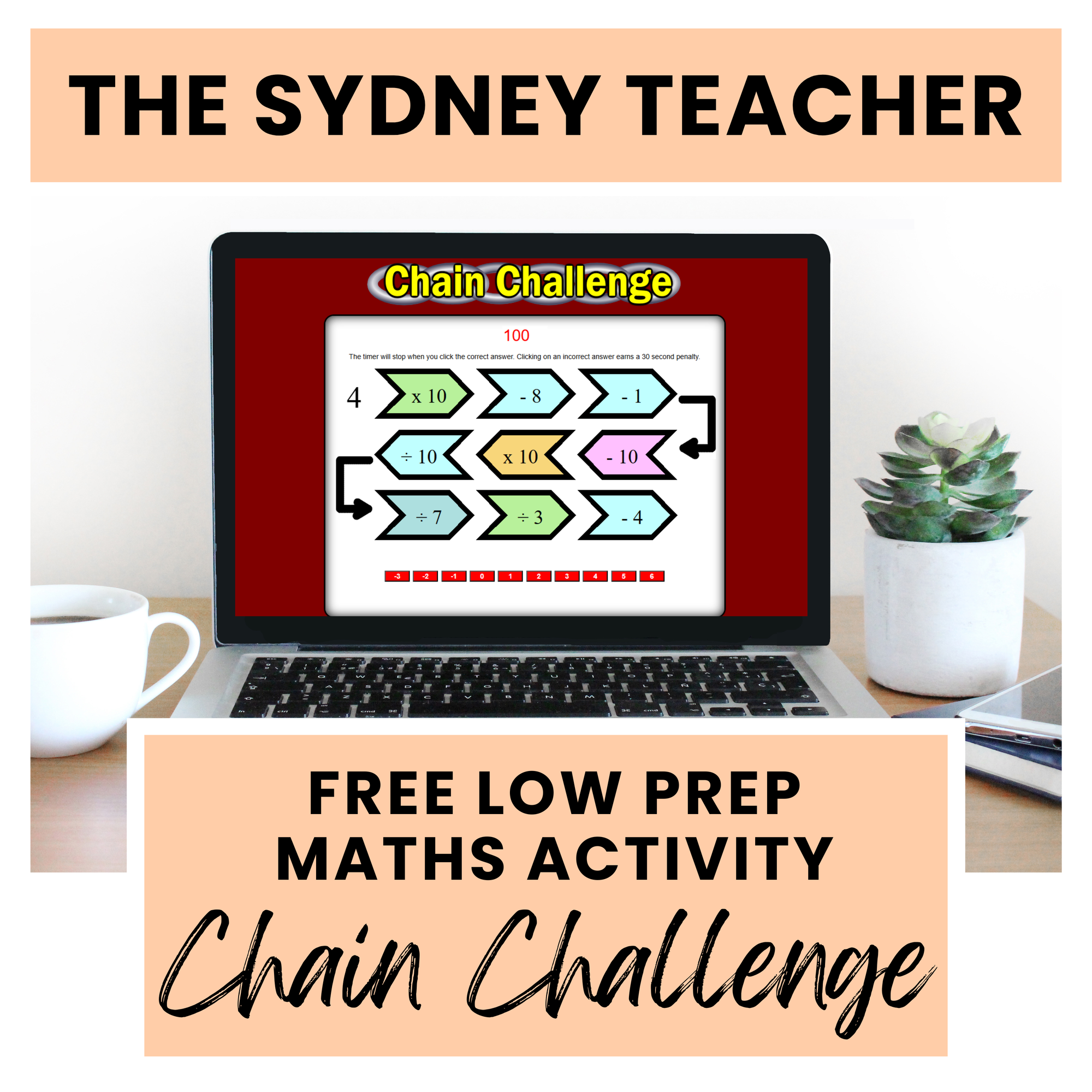
Maths Warm-Up: Chain Challenge
Chain Challenge from Transum.org is a free, engaging maths warm-up that gets students focused, thinking, and excited to participate.
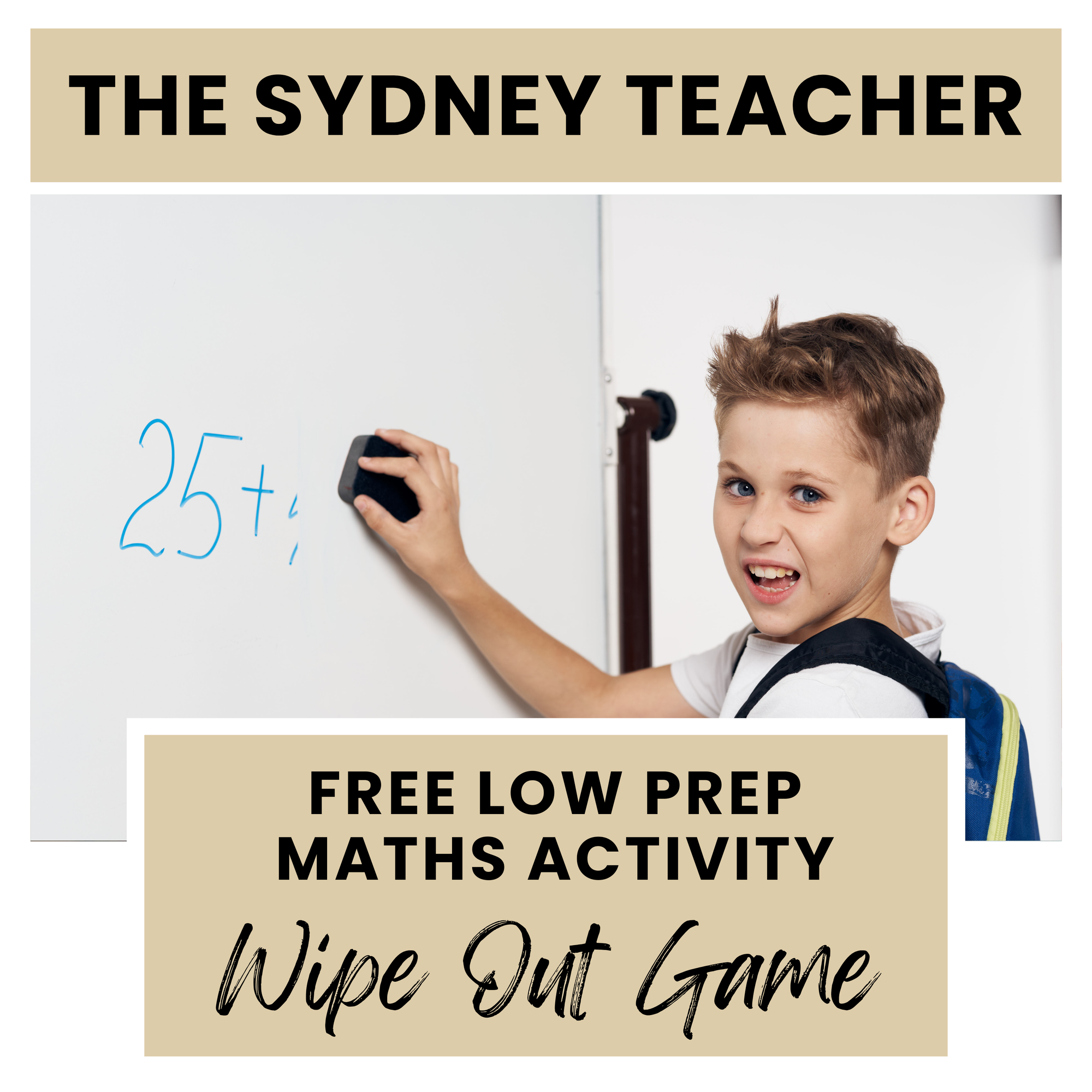
Maths Warm-Up: Wipe Out Game
If you’re looking for a maths game that really hooks students, you’ve got to try Wipe Out. It’s quick, lively, and always gets students on their toes while practising their number skills.
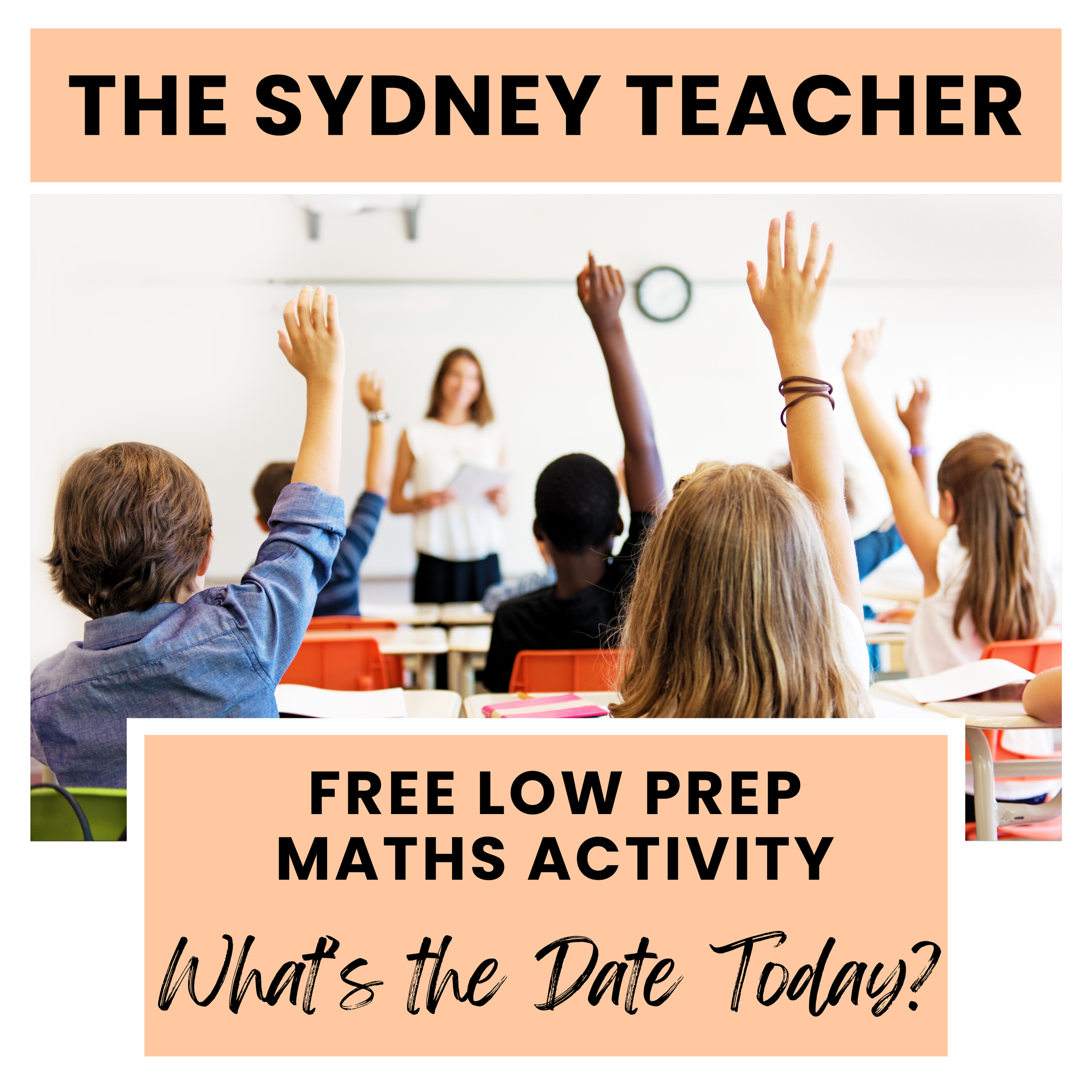
Maths Warm-Up: What's the Date Today?
This maths warm-up brings a little excitement to your morning routine. It is a quick, interactive maths activity that engages the whole class.

